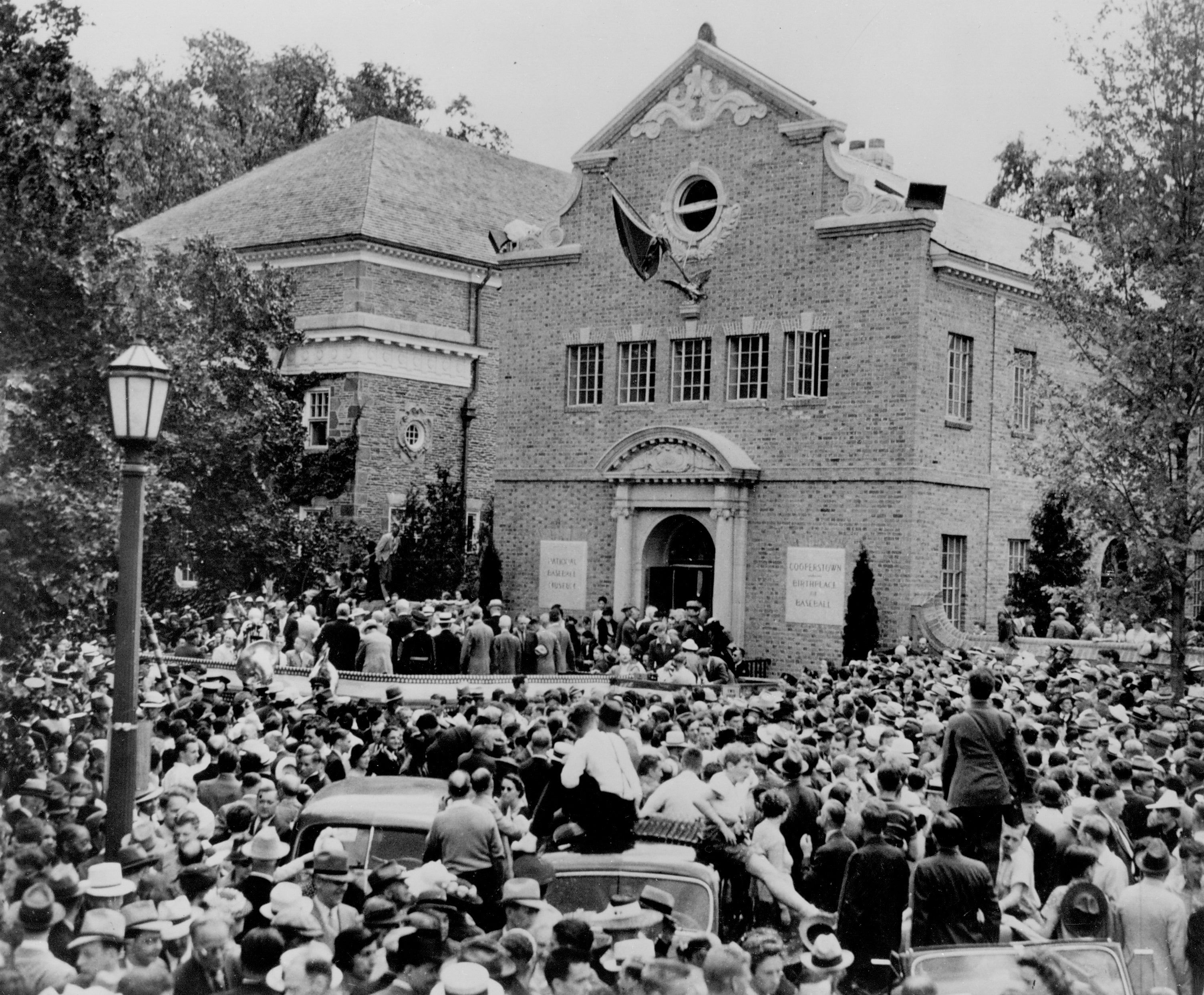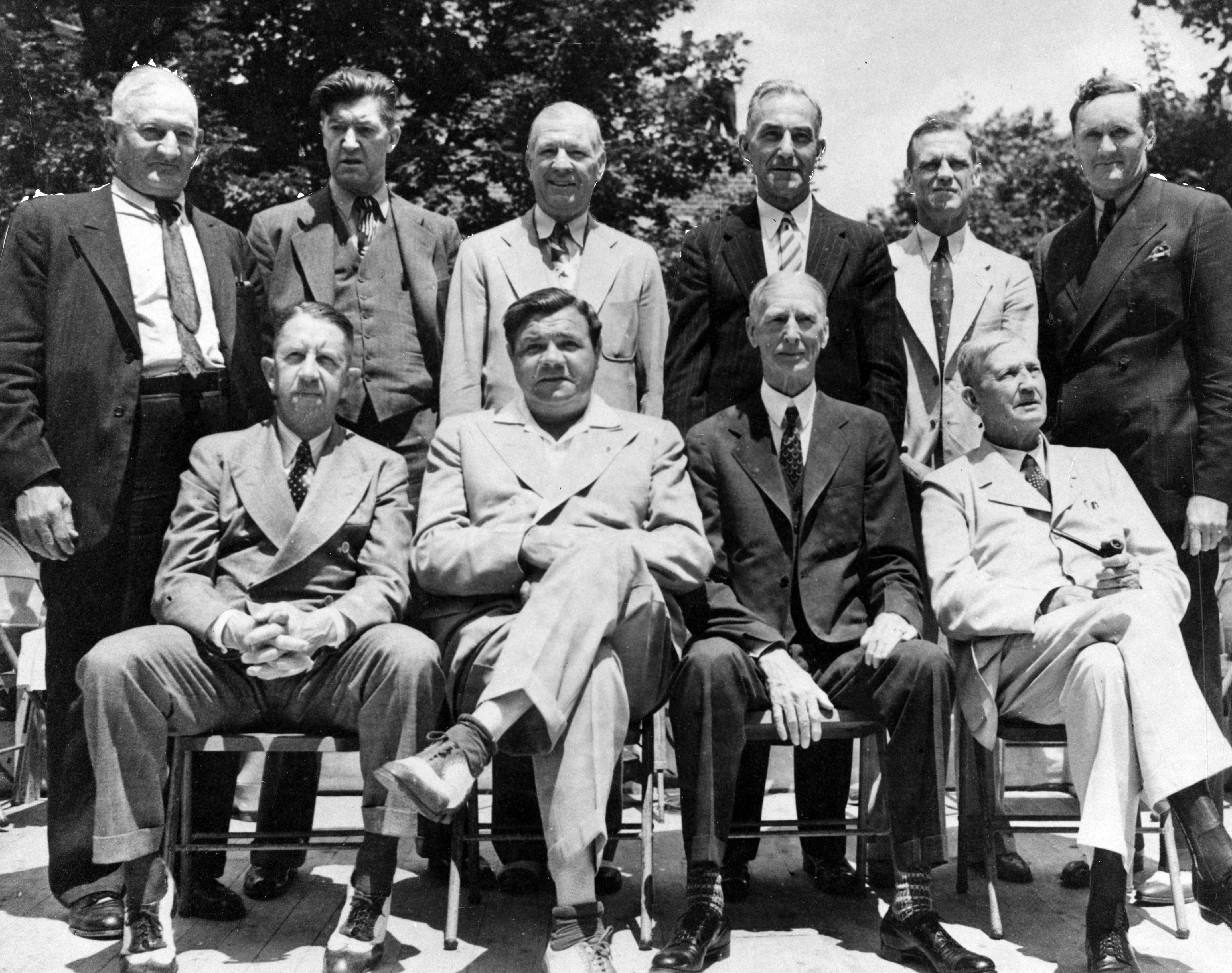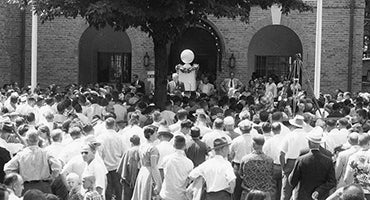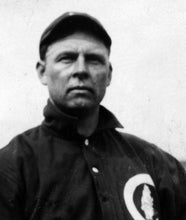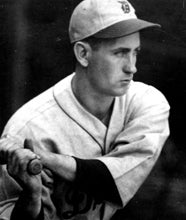- Home
- Our Stories
- 1942-1949
1942-1949
The first candidate elected during the 1940s was legendary second baseman Rogers Hornsby, who was the only member of the Class of 1942. The Baseball Writers’ Association of America did not hold Hall of Fame elections in 1940 or 1941. Commissioner Kenesaw Mountain Landis was elected in 1944 following his death, and the Veterans Committee elected a total of 21 candidates from 1945-46. The Baseball Writers’ Association of America elected four candidates in 1947 – one of only two times since 1936 that the BBWAA elected four players at once – and three candidates from 1948-49.
1942
1942 Induction Ceremony
Collecting 78.1% of the vote in the 1942 ballot, Rogers Hornsby joined the Hall of Fame as the single electee. The first National League player to ever hit 300 home runs in his career, was an exceptional hitter who holds the National League record for career batting average standing at .359. Hornsby was the first to be inducted to the Hall of Fame since 1939.
1944
1944 Induction Ceremony
The only person voted into the Hall of Fame in 1944 through the Veterans’ Committee was baseball's first commissioner, Judge Kenesaw Mountain Landis.
1945
1945 Induction Ceremony
Ten new members were elected into the Hall of Fame by way of the Veterans’ Committee in 1945. No Induction Ceremony was held that year. Heavy hitters Dan Brouthers and Ed Delahanty were elected, as well as place hitters like Jimmy Collins and Hugh Duffy. Fred Clarke, Hugh Jennings, and Wilbert Robinson excelled as both player-managers in their illustrious careers. Jim O’Rourke, owner of the National League’s first ever hit, joined the class as well as the second catcher ever to be elected into the Hall of Fame, Roger Bresnahan. Rounding out the Class of 1945 was the flamboyant King Kelly.
1946
1946 Induction Ceremony
Eleven members were selected by the Veterans’ Committee to join the Hall of Fame in 1946. Highlighted by Joe Tinker, Johnny Evers, and Frank Chance, the most famous double play combination of all-time, the class was not formally inducted until 1947. The Class of 1946 also consists of dominating pitchers in Jack Chesbro, Clark Griffith, Joe McGinnity, Eddie Plank, Rube Waddell, and Ed Walsh. One of the greatest hitters of all-time, Jesse Burkett and one half of the “Heavenly Twins,” Tommy McCarthy conclude the Hall of Fame induction class of 1946. On June, 1946, Kenesaw Mountain Landis was formally inducted in a ceremony in Cooperstown.
1947
1947 Induction Ceremony
Two Philadelphia A’s and two New York Giants joined the Hall of Fame in the induction Class of 1947, and the newest class and the Class of 1946 were formally inducted on July 21, 1947. Teammates Mickey Cochrane and Lefty Grove of the three-time pennant winning Philadelphia A’s from 1929-1931 along with leading vote-getter Carl Hubbell and all-around second basemen, Frankie Frisch of the New York Giants, completed the Class of 1947.
Hall of Famers in Attendance
Ed Walsh
1948
1948 Induction Ceremony
In 1948, the Hall of Fame welcomed Herb Pennock, one of the greatest left-handed pitchers in New York Yankees history, and Pie Traynor, long-time Pittsburgh Pirates’ third basemen who ranks fifth on the all-time putouts list at that position.
Hall of Famers in Attendance
Pie Traynor
1949
1949 Induction Ceremony
Leading the way for the 1949 Hall of Fame induction class was Charlie Gehringer, long time second basemen for the Detroit Tigers, who collected 85.3% of the votes on the ballot becoming the only inductee chosen by the BBWAA. Pitchers, Mordecai “Three-Fingered” Brown and Kid Nichols join Gehringer as the other two inductees to the Hall of Fame class of 1949 through Veterans’ Committee vote. The class was inducted on June 13, 1949.
Hall of Famers in Attendance
Fred Clarke, Kid Nichols, Pie Traynor

